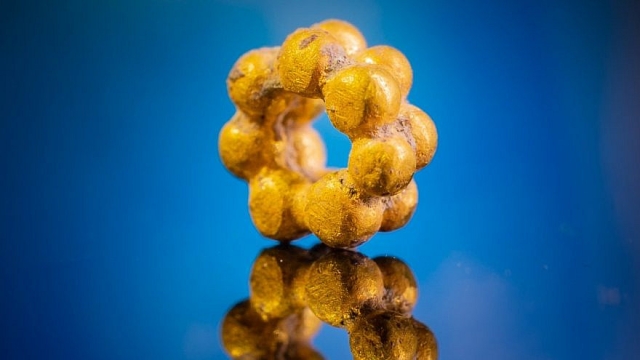A special bead made of pure gold that is more than 1600 years old, was discovered as part of the dirt screening project in the archaeological experience at Emek Tzurim National Park in Jerusalem.
The bead, which originates from the dirt that was removed from a magnificent Roman building in the excavations of the Pilgrim's Way in the City of David, was created using a unique technique that required delicate handwork, in which dozens of tiny balls were glued together in the shape of a ring, to create a small yet expensive bead.
A unique bead made from pure gold and dated to at least 1,600 years ago was uncovered at the sifting project at the Archaeological Experience in the Emek Tzurim National Park Jerusalem. The bead was found in dirt removed from a grandiose Roman structure pic.twitter.com/cCCTqFc719
— Yisrael Medad (@ymedad) February 8, 2023
The Israeli researchers point out that the bead may have been created earlier than the time of the building in which it was discovered, however, it is likely that the people who lived in the building used a bead that may have been accidentally lost when the chain was untied. The find is of particular importance both because of the rarity of gold items in archaeological excavations, and because beads in this style are not common, due to the unique and complex technique used to create them. The origin of the technique is, apparently, in the Mesopotamia region, where it was known at least from the middle of the 3rd millennium BC.
The person who found the golden bead is 18-year-old Hillel Feidman, who volunteers as a national service member in the archaeological dirt-sifting project. “I saw in the corner of the sieve something shiny, different, that I don't usually see. I immediately approached the archaeologist and he confirmed that I had found a gold bead. Everyone here was very excited."
According to Dr. Amir Golani, an expert in ancient jewelry at the Antiquities Authority: "During all my years in archaeology, I found gold maybe once or twice, so to discover gold jewelry is a very, very special thing." He points out that the bead, which has survived all the ravages of time, was probably just a small part of a chain or bracelet that included additional beads.
According to Shlomo Greenberg and Ari Levy, the managers of the excavation on behalf of the Antiquities Authority, "the bead came from a magnificent building, which is at least 25 meters long. The building was built in a construction style that is characteristic of grand buildings. The wealth of the building's occupants is evidenced by other finds discovered inside, such as imported pottery and a decorated mosaic floor."
1,600-year-old rare gold bead discovered in Jerusalem's City of David: The gold bead which is from the end of the Roman era and over 1,600 years old is an especially rare find. https://t.co/YNwfn30kz1 JPost pic.twitter.com/grWqSsFHcb
— Jewish Community (@JComm_NewsFeeds) February 8, 2023
"The most intriguing thing about the bead is its complex and unique production method," explains Dr. Golani. of excessive heating, which could lead to the re-melting of all the gold." According to him, "only a professional craftsman could produce such a bead and this is another reason for the great value of the find."


